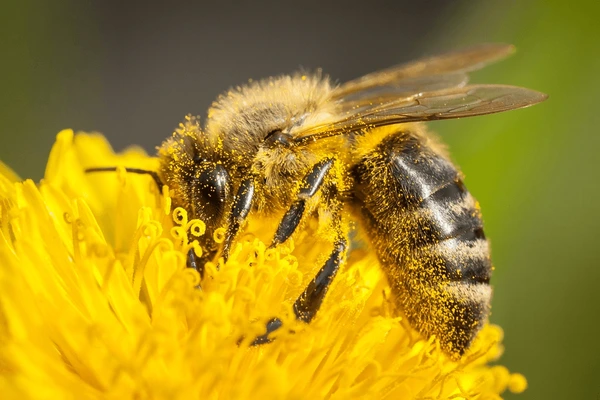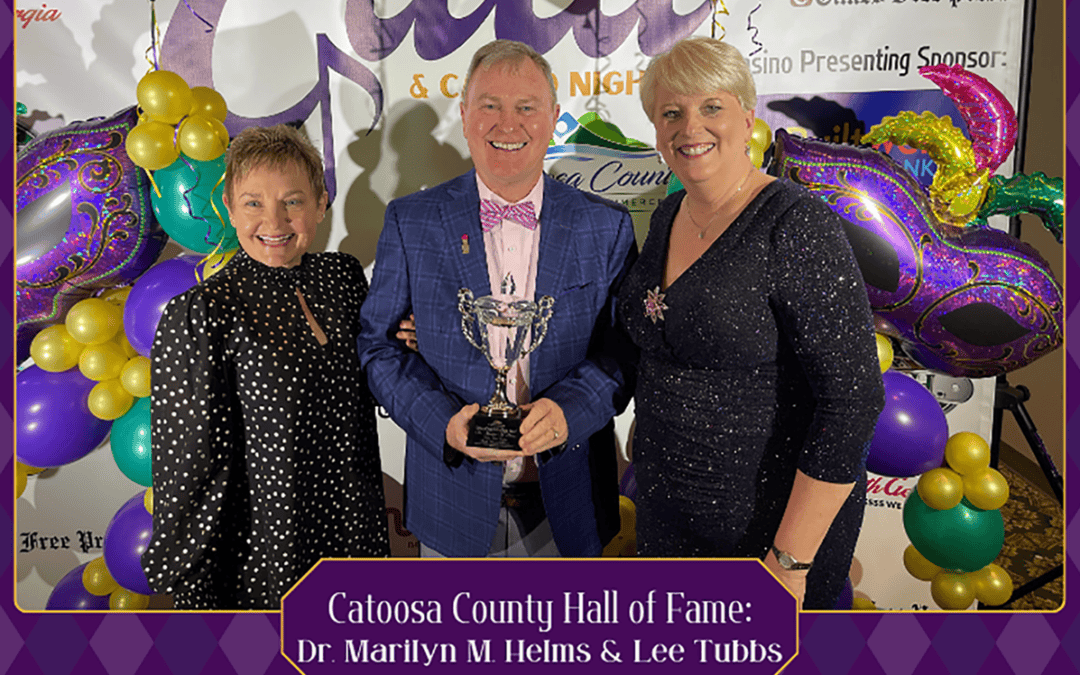READY TO GET STARTED?
REQUEST A FREE ESTIMATE
Fill out the form below or call (888) 466-7849 for a free, no-obligation estimate.

Bees are some of Georgia’s most essential pollinators, yet they face increasing threats from habitat loss, pesticides, and climate change. For homeowners looking to cultivate beautiful and eco-friendly gardens, planting bee-friendly plants can provide a non-toxic environment for these critical pollinators, all while enhancing the vibrancy of backyard spaces.
This blog explores the best bee-friendly plants for Georgia gardens, including native flowers, beneficial herbs, and flowering trees and shrubs. Whether you’re a seasoned gardener or just starting your green-thumb journey, these plant recommendations will help you create an inviting habitat that supports pollinator health.
Before we dig into plant recommendations, it’s important to highlight why bee-friendly gardens matter:
By including the right plants, you enable bees to thrive while also enjoying a more stunning, productive backyard. Now, let’s explore the best options for your Georgia garden.
Georgia’s climate is rich in biodiversity, making it an ideal environment for native flowers. These plants naturally thrive in the region’s soil and climate while offering crucial resources to native bees.
Purple Coneflower is a favorite among gardeners and pollinators alike. With its daisy-like petals and vibrant purple hue, this perennial attracts numerous bee species, including bumblebees and carpenter bees. It’s hardy, drought-resistant, and blooms throughout summer, providing lasting nourishment.
Known for its golden-yellow petals and dark centers, Black-Eyed Susan is a pollinator magnet. These vibrant flowers not only attract bees but also support butterflies and songbirds.
Coreopsis, often called “tickseed,” is a cheerful perennial that thrives in Georgia gardens. Bees love their bright yellow flowers, which bloom prolifically when exposed to full sunlight.
Lavender serves a dual purpose in gardens, offering a soothing fragrance to humans and a rich source of nectar to bees. Its tall, purple flowering spikes are irresistible to a variety of pollinators.
While most people grow basil for its culinary uses, it’s also a bee-loving herb if allowed to flower. Its small clusters of white or purple blooms provide nutrients for pollinators throughout the season.
Rosemary’s evergreen foliage and tiny blue blooms make it a favorite in Georgia gardens—both for pollinators and gardeners. Its flowers can appear even in winter, providing much-needed nectar during colder months.
Flowering trees and shrubs create a stunning visual centerpiece in your yard while offering significant benefits for pollinators. These larger plants serve as vital food sources and shelter for bees in your region.
One of Georgia’s most beloved native trees, the Redbud graces gardens with its vibrant pink blossoms in early spring. Its flowers are among the first food sources for bees after winter hibernation.
The Tulip Poplar, often referred to as the “bee tree,” features distinct yellow-green flowers that are highly attractive to bees. This towering tree is a staple for pollinators looking for abundant nectar.
Nothing captures the beauty of Southern gardens quite like the Southern Magnolia. Its large, fragrant white blossoms are not only a visual feast but also a rich nectar source for native pollinators.
After selecting the right plants, the following tips will ensure your Georgia garden remains a bustling bee haven:
By implementing these practices, you’ll create not just a beautiful garden, but a thriving ecosystem that supports pollinators in the Georgia region.
Bee-friendly gardening is more than just a trend—it’s an investment in the environment and the future of pollinators. By planting native flowers, herbs, and flowering trees and shrubs, you’re building a sanctuary for bees while enjoying vibrant blooms, fragrant herbs, and a healthier landscape.
If a beehive has ended up in an unwanted place on your property, our honeybee experts are here to help! Contact our team for eco-friendly pest control solutions to protect both your home and these essential pollinators.

Pest problems can feel like a never-ending battle, especially in Naples, where the warm, humid climate creates the perfect breeding ground for unwelcome critters. While conventional chemical pesticides might provide a temporary fix, they can pose significant risks to your health, your home, and the environment. The good news? Eco-friendly pest control solutions are not only effective but also sustainable and less-toxic. Check out our green pest control tips for use in your Naples home.
Before diving into the tips, let’s discuss why eco-friendly pest control is the way to go. Traditional pesticides often contain harmful chemicals that linger in your home, garden, and even the local water supply, putting both your family and wildlife at risk. By opting for green pest control methods, you can protect your home without compromising your health or the environment. Whether you’re protecting your Naples home or contributing to environmental preservation, adopting these green strategies can be a win-win!
Natural pest control focuses on using non-toxic techniques to manage pests safely, without harming your family, pets, or the environment. Here are a few simple ways to implement natural methods effectively:
Embracing natural pest control methods allows you to avoid introducing toxins into your home while effectively keeping pests at bay.
The best way to deal with pests is to prevent them from entering your home in the first place. By sealing potential entry points, you can dramatically reduce the likelihood of an infestation.
Sealing entry points is a simple yet powerful step to minimize pest problems before they start.
Your yard can be transformed into a natural barrier against pests. By planting certain eco-friendly plants, you can deter insects and rodents while creating a beautiful garden space.
By incorporating these eco-friendly plants into your garden, you’re not only enhancing your home’s beauty but also creating a pest-resistant outdoor space that supports sustainability.
Living in Naples doesn’t mean you have to accept pests as part of the deal. With these green pest control tips and experts near you, your home can remain a healthy environment for your family while minimizing harm to the planet. From natural sprays and beneficial predators to sealing entry points and planting pest-repellent gardens, these solutions are both simple and effective. Contact a pest control company near you today for a free quote.

Bees are some of the hardest working creatures out there. They pollinate flowers, fruits, and vegetables, making our gardens grow and keeping our food supply strong. If you’re living in Metro Atlanta and want to welcome more bees to your yard, it’s easier than you might think! By making a few small changes, you can create a bee-friendly yard that helps these vital pollinators thrive. Here’s how.
Bee populations have faced many challenges over the years—things like habitat loss and climate change. Without bees, a lot of the plants we rely on for food and beauty wouldn’t thrive. Creating a bee-friendly yard is one-way homeowners can make a big difference. Even small adjustments on your property can provide bees with the resources they need to keep buzzing and pollinating.
Not sure where to start? Here are some simple steps to transform your yard into a haven for pollinators.
Native plants are like a bee’s favorite restaurant—they provide the perfect food and habitat. Bees especially love plants that produce nectar and pollen, so consider adding a variety of flowers, shrubs, and trees that bloom at different times of the year to feed them throughout the seasons.
Some great options for Metro Atlanta include:
Having a mix of colors, shapes, and sizes will also attract a wider variety of bees and other pollinators.
Bees are highly sensitive to pesticides, herbicides, and other chemicals. Instead of using traditional weed killers or harsh sprays, try natural alternatives. For example:
Going chemical-free is not only better for bees but also for your entire backyard ecosystem. Look for green pest control options!
Bees get thirsty too! Add a simple water source to your yard, but make sure it’s bee-friendly. A shallow dish of water with pebbles or floating wood pieces will help bees drink without risking them getting stuck. Change the water regularly to keep it fresh.
While we love a well-manicured yard, bees appreciate a bit of wildness. Allow part of your garden to grow naturally, leaving wildflowers or clovers to sprout. You can even create a small “bee corner” filled with pollinator-friendly blooms and plants that don’t need much trimming.
Not all bees live in hives like honeybees. Many, like bumblebees and solitary bees, make their homes in the ground or inside hollow stems. Consider leaving some bare soil or building a small bee “hotel” from wood, bamboo, or other natural materials. It’s a fun project and a great way to attract nesting bees.
The best part of creating a bee-friendly yard is that the effort pays off in more ways than one. Bees will love your yard, and you’ll benefit too! Here’s how:
You don’t need to overhaul your entire yard to make it bee-friendly. Start small by planting a few native flowers or setting out a water dish. Little changes can make a big impact over time.
If you’d like more tips or professional help with creating a bee-friendly space, or if you need assistance managing an unexpected hive, reach out to your local bee relocation company. They’re there to support you and the bees, making your yard both beautiful and welcoming for pollinators!

The Catoosa County Chamber of Commerce Business Hall of Fame recognizes individuals whose dedication and service have left a lasting impact on the local community. This year, two outstanding leaders—Marilyn M. Helms and Lee Tubbs—have been honored for their significant contributions to business, education, and community service.
Marilyn Helms retired in December 2024 after an impressive 25-year career at Dalton State College, where she served as Dean of the Wright School of Business. Her leadership was instrumental in securing AACSB Business Program Accreditation, overseeing a $10 million renovation of Gignilliat Hall, and launching a bachelor’s degree in Logistics and Supply Chain Management.
Beyond higher education, Helms has played a vital role in community health initiatives, serving as Chair of the CHI Memorial Board, where she has been a driving force behind bringing a new hospital to the region. Her dedication to both education and healthcare exemplifies a true commitment to community betterment.
A respected leader in the pest control industry, Lee Tubbs founded Enviroguard Pest Solutions in 1997 with a mission centered on quality, integrity, and service. His company quickly became known for its exceptional service and dedication to customer satisfaction.
A former Catoosa Chamber Board Chair, Lee’s impact extended far beyond his business. He recently merged Enviroguard with Northwest Exterminating, ensuring the company’s continued growth and extraordinary service in pest management. His decades of industry leadership also earned him a well-deserved induction into the Georgia Pest Control Association Hall of Fame. At Northwest, we are proud to honor Lee’s legacy and celebrate his contributions to both our company and the communities we serve.
Alongside his wife, Lee has been a fixture in the community, embodying a spirit of service that goes beyond business. Together, they have built a reputation for customer-first values and a commitment to giving back—principles that have guided their success over the years.
Both Marilyn Helms and Lee Tubbs have profoundly shaped Catoosa County, leaving legacies that will be felt for generations to come. Whether in education, business, or community leadership, their extraordinary contributions have made the region a better place to live and work.
We celebrate Marilyn and Lee’s incredible achievements and look forward to seeing how they continue to inspire and impact the community in the years ahead!

Bees are essential to our ecosystem. They pollinate flowers, fruits, and vegetables, making them integral for Tennessee’s lush gardens and thriving agriculture. However, typical pest control practices often inadvertently harm these invaluable insects. As a Tennessee homeowner, balancing pest control with environmental responsibility is a challenge—but not an impossible one. This guide focuses on bee-friendly pest control practices that help protect these vital pollinators while keeping your home and garden pest-free.
Bees are not just important for the environment—they contribute directly to the economy of states like Tennessee. From pollinating crops like apples, watermelon, and pumpkins to supporting wildflower blooms that benefit local wildlife, bees play a huge role. Unfortunately, widespread pesticide use has been a key contributor to the decline of bee populations. This decline could have dire consequences for agriculture and biodiversity.
But with a few mindful changes to your pest control approach, you can support pollinator health while maintaining your home’s comfort and well-being. Read below to find out how!
When using pesticides, the timing of your application is one of the most critical factors for bee protection. Bees are most active during the daytime—typically from mid-morning to late afternoon. Applying pesticides during these peak hours increases the likelihood of exposing them to harmful chemicals. To minimize the risk, consider scheduling treatments in the early morning or late evening when bees are less active.
Instead, opt to spray pesticides:
By targeting these times, you reduce the chances of directly affecting bees while ensuring pests are still managed effectively. You can also ask your local pest control company if they can accommodate bee-friendly application times to further protect these important pollinators.
Not all pesticides are created equal. Some are formulated to minimize harm to beneficial insects like bees. When choosing a professional pest control company, look for those explicitly labeled as “bee-protected or “non-toxic to pollinators.”
Here’s what to avoid and what to consider:
These products allow you to take care of garden pests without risking the health of your local bee population. If in doubt, consult a pest control professional who prioritizes environmentally-friendly solutions.
Blanket-spraying your entire yard is not only unnecessary but also harmful to the environment. This approach increases pesticide exposure for non-targeted species, including bees. Instead, focus on spot-treating problem areas where pests are concentrated.
How to spot-treat effectively:
Spot-treating is a more targeted strategy that minimizes collateral damage to bees and other beneficial insects.
Bees rely on flowering plants for food, so when applying pest control measures, it’s crucial to leave a portion of your yard bee-friendly. Reserving areas of blossoming plants untouched by pesticides creates foraging zones for pollinators.
To encourage a pollinator environment:
By creating these havens, you ensure that bees can continue to thrive, even while managing pests elsewhere in your yard.
Companion planting involves pairing specific plants that naturally repel pests with your garden crops. For instance:
This natural method not only reduces your need for chemical pesticides but also supports pollinator activity.
While dandelions and clovers may be considered weeds, they’re important food sources for bees. Limiting mowing in areas where these plants grow allows pollinators to access vital nutrients, particularly in early spring.
For a sustainable pest control approach, partner with an eco-friendly company that prioritizes honeybee protection. Many services in Tennessee offer solutions that target pests while keeping pollinators unharmed. Homeowners can help by adjusting pesticide timing, choosing non-toxic treatments, and creating foraging zones. If a beehive ends up in an unwanted spot, contact our honeybee experts to responsibly rehome it.